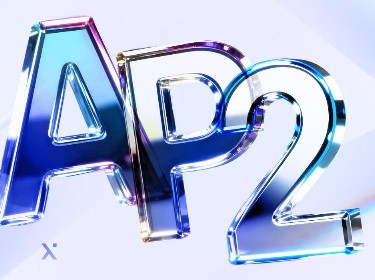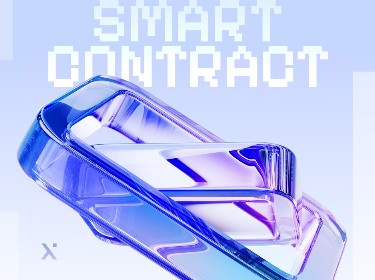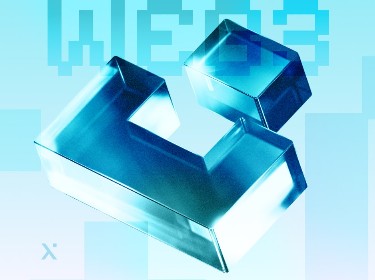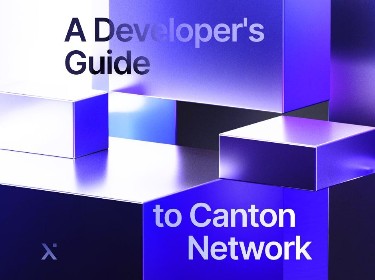Asset tokenization is changing the way we think about ownership and investment by converting physical and intangible assets into digital tokens on a blockchain. But how exactly does it work?
Originally created to facilitate cryptocurrencies, the possibilities of this technology have gone much further. Blockchain is disrupting a lot of industries these days and isn’t showing any signs of stopping. It now enables the tokenization of any real physical or digital assets.
But what underlies the real world asset tokenization platform development, and is it truly possible to tokenize virtually anything? Alex Dolgov, a blockchain expert, answers all these questions to help you grasp the basics of this phenomenon and explore the opportunities associated with tokenizing physical assets.
Let’s dive even deeper into asset-backed tokenization and learn about its application across industries like finance, real estate, precious metals, art, sports, entertainment, and ecology. You can even tokenize yourself! Curious how? Read on to find out.
What is asset tokenization?
Asset tokenization is a way of digitizing tangible and intangible assets and converting them into tokens, which are then stored on the blockchain. One asset is not generally equal to one token: assets are usually broken down into smaller fractions, forming many tokens.
Once the owner has tokenized their assets and they have entered the digital world, it becomes possible to store and trade them fractionally or completely, as well as transfer them to other owners.
Those who have heard about asset tokenization services or searched for this service before may also be familiar with Security Token Offerings (STOs). Indeed, STOs are closely related to blockchain technology and the tokenization of assets.
The connection between these three concepts is quite simple. Everything starts with blockchain — this technology makes it possible to create and store tokens. Then an asset owner needs to choose a special STO platform that enables them to digitize their assets and turn them into the number of asset-backed security tokens they need. After that, they can launch their own STO campaign, and anyone in the world can buy those tokens, thereby investing in the asset holder’s business.
Have questions about blockchain technology, asset tokenization, or any other applications of this tech? Ask our blockchain consultants
What are the benefits of asset tokenization?
![]()
Blockchain is the technology that precisely delivers the main benefits of digital asset tokenization. Let’s take a closer look at some of them.
- Greater accessibility and liquidity of assets
Blockchain technology provides a decentralized system and allows anyone from anywhere in the world to tokenize their assets and sell them at any time.
Moreover, the range of assets that can be tokenized is extremely broad, including traditionally illiquid assets such as real estate, antiques, artworks, private company interests, and cars.
Blockchain thus removes numerous barriers to investment and enhances liquidity.
- Transparency
By default, the public blockchain implies transparency: all transactions on the blockchain are available to all its participants. This is crucial for any user, as they can trace the entire history of actions with a particular asset, verify its origin, and observe how its ownership has been transferred.
- Immutability
All data stored on the blockchain is immutable. Anyone interested in creating, selling, or buying tokens can rest assured that the asset information and transaction records are accurate, as they are verified and cannot be changed once recorded onto the blockchain.
- Fractional ownership
The owner of the asset can split it into as many parts as needed. The ability to fractionalize assets also enables partial ownership, attracting a large number of investors and further boosting asset liquidity.
- Cost savings
Blockchain technology allows the owner of the asset and its buyer to contact each other directly, thus eliminating the involvement of intermediaries. This significantly reduces the costs that would normally be spent on third-party services.
Plus, it usually may take hours or even days to transfer assets and conduct related transactions, but thanks to the blockchain this process can now be completed within a few seconds.
Real-world applications of asset tokenization by industry
![]()
Secure asset tokenization has already entered many industries, from the financial sector and cryptocurrency transactions to real estate, precious metals, and even sports and music. Let’s find out what asset tokenization is doing within each industry.
Tokenization in finance
Many financial market players are introducing blockchain-based financial assets into their work. It is vital for investment banks, for example, to study asset tokenization and present it to their clients so that their banking business thrives and clients can discover new avenues for investment. Stock markets and asset managers should keep up with this trend, too.
Equity tokens and crowdfunding
ESMA concluded that, in terms of regulatory status, equity tokens can be considered financial instruments and treated as securities. Equity tokens function as a traditional share, that is, the owners literally possess a certain percentage of the total enterprise and can receive a portion of its profits and participate in making decisions about the company’s future.
For this investment model to work, investors must first have free access to reliable information about STOs. It is also important for knowledgeable broker-dealers to be involved, as they can identify and sell securities to qualified investors. Finally, there must be crowdfunding platforms that comply with KYC/AML requirements and can serve investors effectively.
Several examples of such platforms include:
KickICO is an online reward and donation crowdfunding platform built on Ethereum smart contracts with its own KickCoin token. This solution allows you to buy tokens for innovative start-up projects. Besides, the platform received the title of ICO of the Year after its launch in 2017.
- TaoDust
TaoDust provides an equity crowdfunding platform backed by the blockchain. Investors can invest in Euros, USD, BTC, and ETH, and enjoy low transaction fees.
- Securitize
Securitize is a platform for fund-raising covering all stages, from primary issuance to market trading. Securitize Markets is SEC and FINRA licensed as well as recognized by the Alternative Trading System (ATS).
Venture capital
This type of investment is associated with high risk, so developers need to provide the most advanced solutions that will assist both promising startups and risk-taking investors.
Smart Valor, for instance, launched the VALOR platform, which serves as a decentralized marketplace for tokenized alternative investments such as venture capital and hedge funds. The opportunities offered by this platform go beyond this functionality as users can also exchange cryptocurrencies and manage their digital asset portfolios.
Tokenization in real estate
Real estate asset tokenization is unlocking many new investment opportunities. Since blockchain technology eliminates multiple intermediaries, it has become easier for buyers and sellers to interact with each other.
In addition, fractional ownership is also possible in the real estate industry. How does it work? Let’s say you and your friend are buying a summer house. After the purchase, both of you are the owners and can agree on the terms and conditions for using the house.
If you are eager to learn more about the benefits of real estate tokenization, how to tokenize real estate assets, and how it is regulated, then check out the video guide prepared by the PixelPlex team. We provided answers to the most common questions regarding this type of tokenization.
The St. Regis Aspen Resort
The resort was one of the early and significant examples of real estate tokenization. The property was tokenized through the creation of a single-asset REIT called Aspen Digital. This initiative raised funds by selling tokens that represented an 18.9% equity stake in the resort, with each token priced at $1, accumulating millions in investment through this token sale.
The AnnA villa near Paris
One more real-world case — the villa near the French capital — became the first piece of real estate in France to be sold through a blockchain transaction.
The villa, whose value is estimated at €6.5 million, was sold in three stages. First, the ownership of the building was transferred to the joint-stock company SAPEB AnnA. Then the property was divided into 10 Ethereum-based tokens and the tokens were distributed among the new owners. The result was that each of the tokens was split once again, into 100,000 units worth €6.50 each.
Find out about this blockchain STO platform and ecosystem for turning recreational assets into security tokens
Tokenization of precious metals
The interest of traders and investors in precious metals and natural resources has remained unchanged for many centuries. The 21st century is no exception, but the form of trading is changing due to the introduction of asset tokenization.
Gold tokenization
What could be more attractive than investing in gold? It comes as no surprise that blockchain can help with it, too.
The tokenized gold that exists on the blockchain has many benefits. It is important to understand that investors don’t just buy tokens, but purchase the rights to a real asset that is stored in secure vaults. Another advantage is that unnecessary documentation and red tape can be eliminated, as well as the participation of third parties who may not always be reliable.
In addition to that, trading tokenized gold is just as easy as trading cryptocurrencies. Many crypto coins have been created that are backed by real physical gold, and their value is in line with current gold prices. DGX, PMGT, XAUt, and Meld Gold are just a few of them.
Silver tokenization
Silver tokenization works the same way as gold, but silver is more volatile, so traders can buy silver coins and earn off their volatility. Among the most popular silver-backed tokens are SilverCoin (SVC), Silverlink (LKNS), and SilverTokens (SLVT).
Tokenization of artworks
When we talk about fine art, we often associate it with world-famous artists, museums, auctions, and, of course, extremely high prices for paintings sold at auction. But what if we told you that blockchain can change this perception? Blockchain can make art more accessible not only to art lovers but to artists themselves because they can now tokenize their works and sell them around the world without intermediaries.
Maecenas, for example, is an art investment platform that allows artists to tokenize their masterpieces and build their own portfolios. In addition, Maecenas enables any art lover or investor to acquire fractional interests in works of art using blockchain technology.
Turning art into NFTs is another trend that skyrocketed in 2021 and continues to bloom up until now. “The Merge” by the artist Pak holds the record for the most expensive NFT ever sold, achieving a total of $91.8 million. This digital artwork uniquely increased its value as more collectors acquired “mass” units, merging them into a single NFT, which illustrates an innovative approach to interactive digital art ownership.
Explore this article to learn about the intricacies of creating blockchain-based art NFTs
Tokenization in sport and entertainment
Tokenizing sports stars, musicians, and soccer teams might sound odd, right? In fact, not only is all this possible, it’s already happening.
Sports
It is estimated that the global entertainment sports market will grow to almost $600 billion in 2025. Tokenization of assets will play a significant role in this development as well: companies are already launching new solutions for fans, and athletes are exploring opportunities in tokenization too.
For example, in May 2022, FC Barcelona introduced its pioneering NFT collection named “Unleash Your Passion” in collaboration with Plastiks. This series, consisting of 3,000 animal-themed NFTs priced at $30 each, aims to support environmental efforts by promising to help remove 35 million kilograms of plastic from the environment.
Following this launch, in July 2022, the club auctioned its first NFT, titled “Masterpiece #1 In A Way,” at Sotheby’s in New York, which fetched $693,000. The subsequent NFT, “Masterpiece #2 – Empowerment,” was sold through the OpenSea platform on June 28, 2023, for $300,231.
Check out FootballNet – a Hyperledger Fabric-based platform that is a win-win solution for both sports clubs and their supporters
Entertainment
Music artists aren’t standing aside either. Blockchain and asset tokenization can help independent musicians discover new funding opportunities and raise money to develop new projects and record albums.
An artist can sell their tokens directly to fans. Thanks to smart contracts, musicians can receive automatic and instant payments for songs and recordings, instead of having to wait for a long time for their hard work to be rewarded.
The most recent examples of entertainment tokenization of assets are as follows: rapper Redfoo, one of the performers of the hit “Party Rock Anthem” signed a contract with TokenStars. This platform aims to provide transparent interactions between celebrities, fans, brands, and advertisers. Lothar Matthaus, Vinny Lingham, Tommy Haas, and several other celebrities have also joined the project.
Tokenization for better ecology
After the description of athlete tokenization, it might be difficult to surprise you with something even more amazing, but we will try.
One tangible asset tokenization example in ecology is the introduction of so-called impact tokens. They are issued with the specific purpose of attracting investment for projects with positive social and environmental impacts. Plastic Bank, for instance, is an asset tokenization solution that is meant to make our world a better place.
The approach of this Canadian startup is not only to make the planet cleaner but also to help people on low incomes earn a living. Their idea works as follows: collectors are recruited to collect plastic in places where there are problems recycling it. The plastic waste is then exchanged at local collection centers for cash, digital tokens, or vouchers for essential items.
To date, company employees have stopped 122,3 million kg of plastic waste and gained 48,746 community members.
Another exciting example is the tokenization of carbon credits, which allows companies to convert their carbon offset contributions into digital tokens, making it easier to trade and track. This helps incentivize businesses to reduce their carbon footprint while giving investors a way to support environmentally conscious projects.
Dive into carbon credit tokenization to understand how this approach is revolutionizing the way we handle carbon trading and environmental accountability
Tokenization of personal achievements
The goals of this kind of asset tokenization are slightly different from those described above. It is not designed to gain access to a market and obtain ownership rights to an asset, but rather to make a profit here and now.
We often say that education is an investment in our future. Self-tokenization is borne of a very similar concept. With this, people are looking for investors for themselves. So investors are investing now to benefit from the successful work of a particular person in the future.
So what is it like to tokenize yourself? Just look at how Alex Masmej did it. This 23-year-old guy from France sold $1 million worth of $ALEX personal tokens on Ethereum. In total, he managed to collect $20,000. The young man stated that holders of $ALEX tokens will receive a distribution of 15% of his income over the next 3 years, and the money will be paid quarterly.
Alex clarified that he will spend the collected $20,000 on moving to San Francisco where he’s planning to launch a startup in the field of DeFi.
Tokenizing physical assets in 7 steps
![]()
To join the token economy — that is, to successfully tokenize your own assets and provide access to them for a pool of investors — you need to learn about the asset tokenization process, which goes as follows:
Step 1. Choose an asset
The very first thing you need to do is to decide on what exactly you are going to tokenize. It is better to choose an asset that already has a significant market because you will know the price range and will be able to correctly set the prices for tokens.
If your asset is not very popular and it is difficult to evaluate it yourself, you should request a valuation from an accounting or auditing company.
Step 2. Develop a business model and strategy
You also need to be clear about your future business model. To design it, you have to think about sources of income and financing details and decide where the client base will come from.
Step 3. Create the platform
This stage is about how your idea is embodied in a mechanism that will work according to your business plan. Here you have the choice to either create the platform yourself (you will need to have coding skills and be familiar with blockchain technology) or delegate this task to professional blockchain developers.
Step 4. Learn about regulations in your jurisdiction
This step can be relatively difficult as it is necessary to clearly understand the laws relating to digital assets and blockchain technology and strictly comply with them. It is best to contact an experienced legal advisor and ask for a professional consultation.
Step 5. Publish a whitepaper
Next, you write and publish a whitepaper in which you briefly describe why your token has been created and how potential buyers can benefit from purchasing your asset-backed tokens. Include an analysis of your work and the conclusions that you came to when preparing your project.
Step 6. Attract investors
After publishing the whitepaper and testing your new platform, you can start working on attracting potential investors through your secure asset tokenization. This is where your marketing skills come into play.
Step 7. Enhance your platform
With the financial backing of investors, you can continue to improve your platform and get it ready for production.
You now have a complete platform for exchanging real-world assets and turning them into tokens. But don’t stop there. No matter how ideal the platform may seem to you, it can always be improved.
Learn about Obito — a Bitcoin Cash-based platform that can be used to tokenize any type of real asset
Conclusion
Asset-backed tokenization is already playing a transformative role in asset management, slowly but surely entering numerous markets, democratizing them, and making them safer and more equitable.
Nowadays we can tokenize literally anything: works of art, gold, silver, cars, houses, carbon credits, football teams, music producers, and even ourselves! However, the digital asset tokenization process itself may seem complicated, especially for those who are not yet familiar with the digital crypto world.
PixelPlex is here to help you out! Our engineering team has years of experience developing various blockchain applications, crypto wallets, and asset tokenization platforms. Specifically on the latter, our company has designed an STO platform that can digitize any type of asset, providing the infrastructure and complete ecosystem needed to run a Security Token Offering campaign.
Feel free to contact us, and we’ll tell you more about this solution, or create a brand new one. We’ll make sure that your application brings the maximum benefit to your business.




